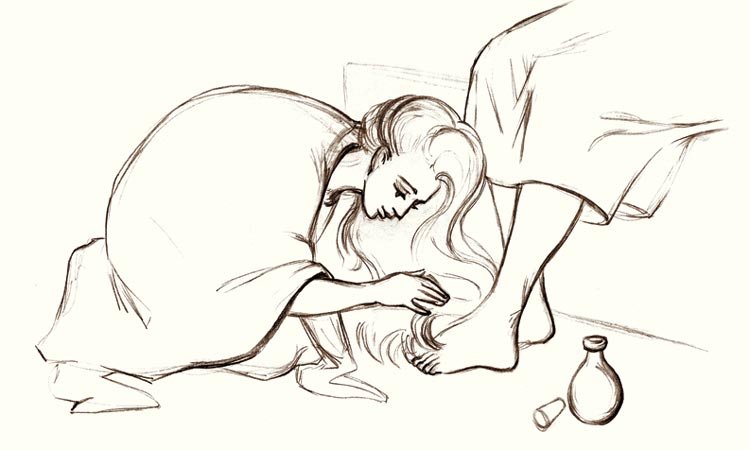For centuries, we’ve heard dozens of varying stories and interpretations of Mary Magdalene (also called Mary of Magdala), one of the leading female figures in the New Testament. Among the women mentioned in the Bible, she was one of the most controversial.
From my earliest recollections of Mary Magdalene, she was indelibly labeled as the infamous prostitute, delivered of seven devils. However, as I began studying the gospel accounts, I found that neither Matthew nor John mention anything about her having demons or being demoralized and tarnished. They focus instead on her undying loyalty to the Savior.
Mary Magdalene stands apart as one who was present at the foot of the cross when Jesus was crucified. She was also there, sitting opposite the tomb at the burial of Jesus, and was the first to see Him following His resurrection. Mary was then commissioned by Jesus to tell the other disciples about His resurrection.
The life of this Galilean woman of Magdala is without a doubt shrouded in mystery. Little is written about her. In all four of the gospel accounts, Mary is mentioned along with several women who followed Jesus and ministered to Him when He was in Galilee, and they came up with Him to Jerusalem.
From the very first time Mary heard Jesus speak, she was so deeply moved that she sought to hear more of His life-giving words of truth that were different from anything she had ever heard before.
After Mary’s conversion, her devotion to Jesus was so great that she dedicated her entire life to serving Him. She was among those who followed Jesus as He carried His cross to Calvary. As they approached Golgotha, there were few who stood close by at the foot of the cross. Those mentioned were Mary, the Lord’s mother; John the beloved; Mary, the wife of Clopas; and Mary Magdalene. Heartbroken and devastated, she remained until the moment Christ breathed His last breath with the words: “It is finished!” (John 19:25–30).
She watched, wondered, and wept in silence. Her deep sadness was indescribable. Mary had witnessed the brutality of the cross and the horrors of Christ’s suffering, while most of the disciples had fled from the scene and hid in secret. She could not walk away. She was compelled to stay by her Lord and Savior! The devotion of her heart could not be extinguished by danger or even threat of death.
Very early on the first day of the week, while it was still dark, Mary Magdalene came to Jesus’ tomb and saw that the stone had been rolled away from the entrance. Breathlessly, she ran at once to Simon Peter and John to tell them that they had taken the Master from the tomb, and she didn’t know where they had put Him.
The disciples ran to the tomb and saw that it was empty, then they went back home. But Mary stood outside the tomb weeping. As she wept, she knelt to look into the tomb and saw two angels sitting there. They were dressed in white, one at the head and the other at the foot of where Jesus’ body had been laid. They said to her, “Woman, why do you weep?”
She responded, “They took my Master, and I don’t know where they put Him.” After she said this, she turned away and saw Jesus standing there. But she didn’t recognize Him.
Jesus spoke to her, “Woman, why do you weep? Who are you looking for?” Thinking He was the gardener, she said, “Mister, if you took Him, tell me where you put Him, so I can care for Him.” Jesus said, “Mary.” Turning to face Him, she said in Aramaic, “Rabboni,” which means Teacher.
He commanded her, “Do not touch Me, for I have not yet ascended to the Father. Go to My brothers and tell them, I will ascend to My Father and your Father, My God and your God.” (See John 20:1–17.)
At a time when women were generally not given much acclaim, Jesus reached out first to Mary and sent her to share the glorious news of His resurrection with the disciples.
